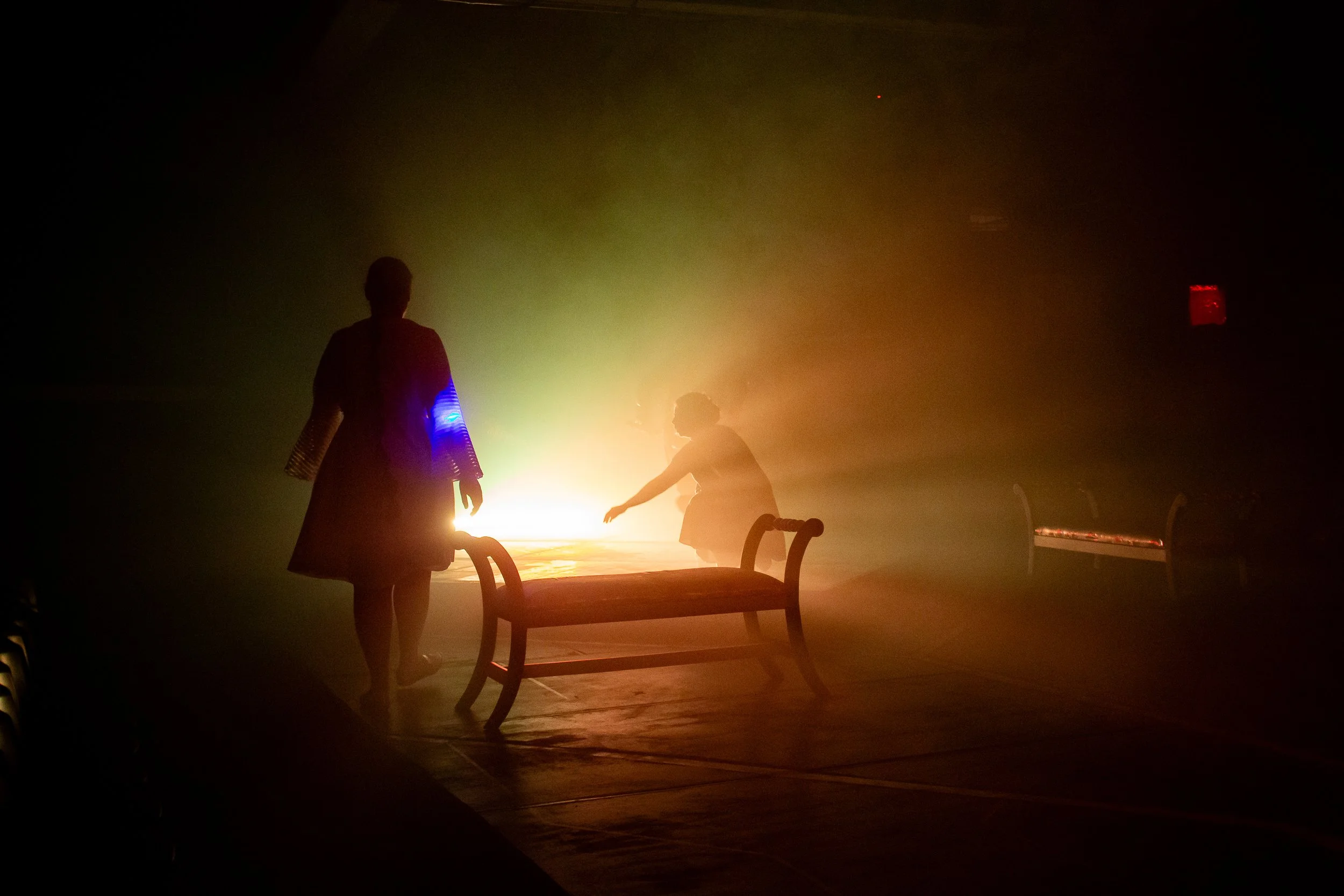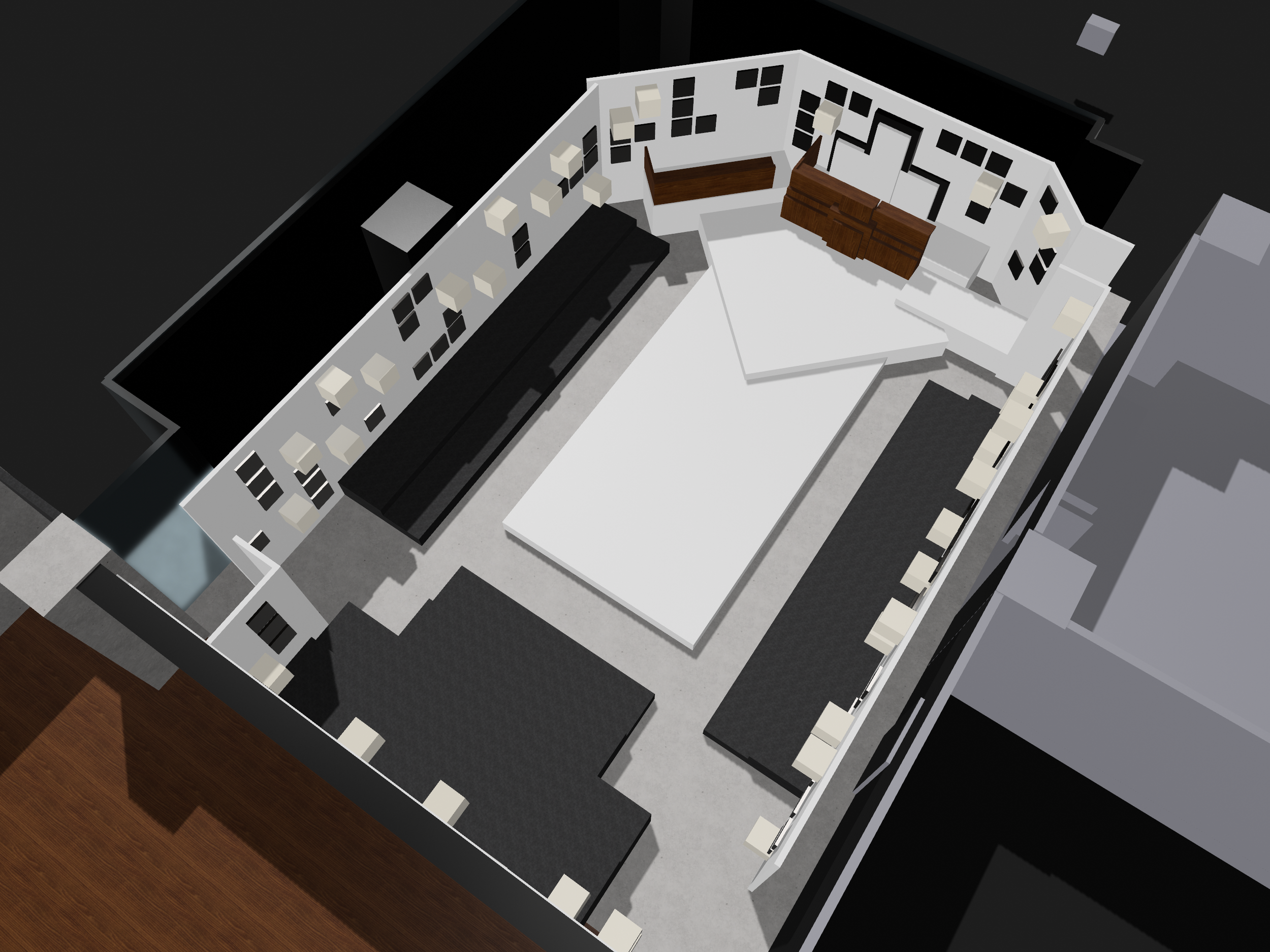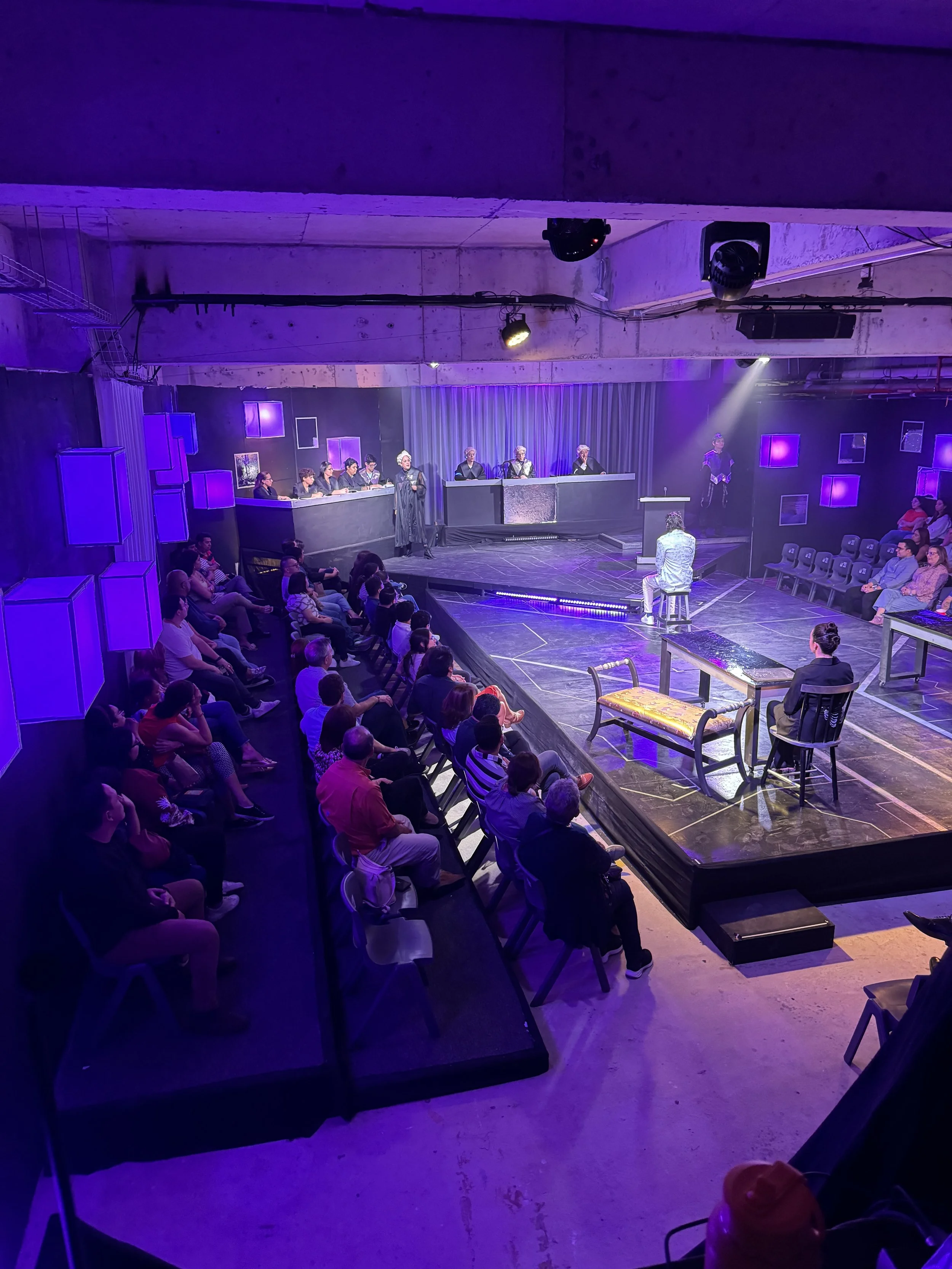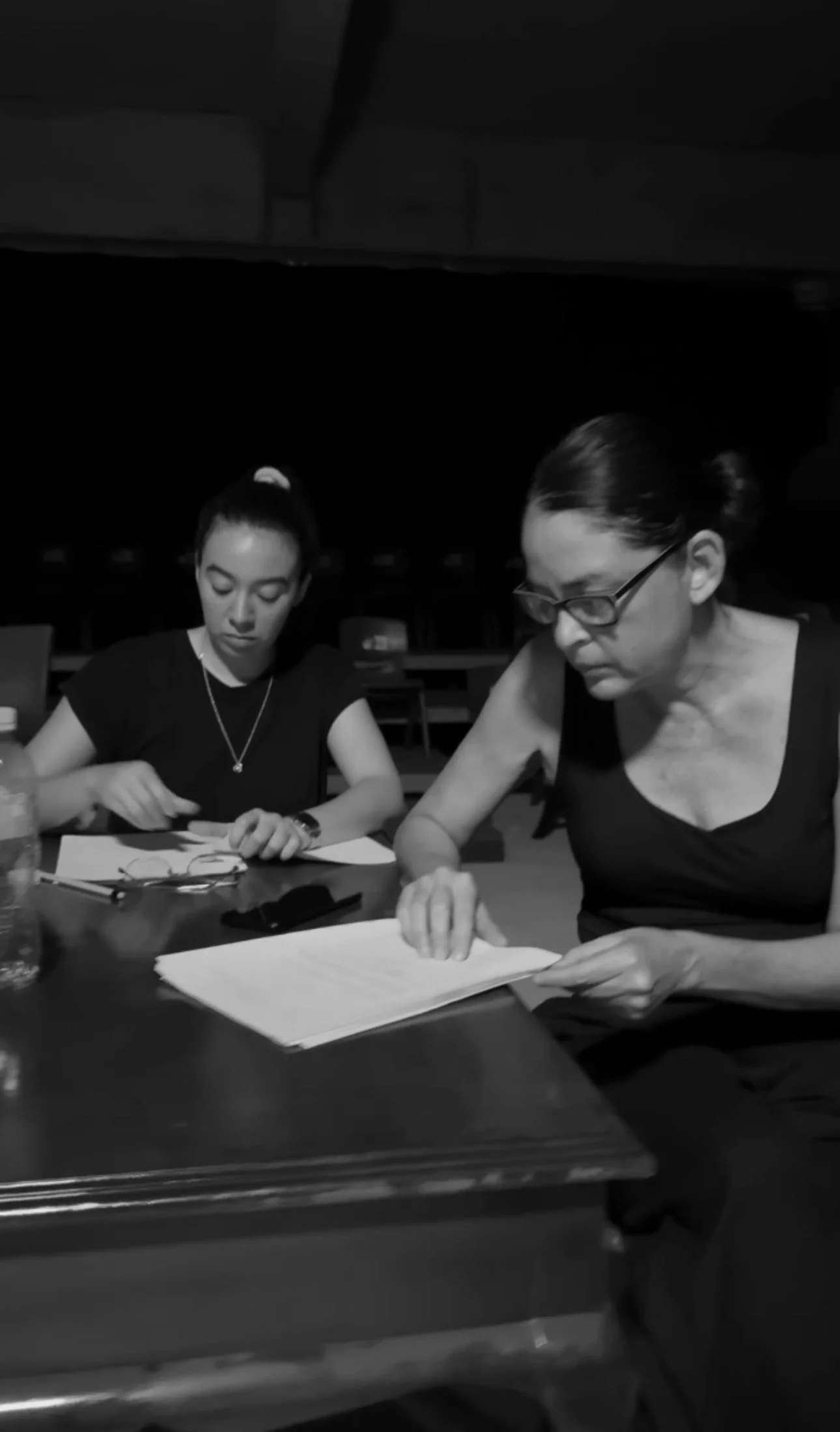Same Murder, Different Century: Returning to Testigo de Cargo
My grandmother “Nena” showed me her collection of Agatha Christie novels years ago. Testigo de Cargo - Witness for the Prosecution - stayed with me. A murder trial, conflicting testimonies, moral ambiguity wrapped in procedural precision. We produced it as the opening show for Teatro de Galerías in 2020, and it became the first Salvadoran production to return after the pandemic. It held a special place in our journey - where we forged friendships, exploded blood bags, and learned how to hold an audience's attention through pure narrative tension.
I don’t like bringing back productions for second runs. But the challenge of reimagining this wonderful story was something I couldn’t resist. The solution: push the entire story 100 years into the future.
The Year 2100+
The core narrative remains unchanged. Leonard Vole is accused of murdering a wealthy widow. His life depends on testimonies, legal arguments, evidence presented in a courtroom. But setting it a hundred years into it’s future let us reframe everything through technology, surveillance, and artificial intelligence.
The courtroom structure stayed traditional - prosecution, defense, judge, jury. But the people working within that system were robots. Lawyer assistants moved with precise, inhuman choreography. They lit up from inside, spoke in modulated cadences, approached truth with algorithmic stubbornness. The question became: does mechanizing justice make it more fair, or does it strip away the human intuition that catches what evidence can't prove?
Building a Cyberpunk Courtroom
The aesthetic was cyberpunk minimalism - clean but grungy, futuristic but dystopian. We covered the set in actual plastic sheeting, creating this corporate sterility that felt oppressive. The walls were lined with interactive light cubes that responded to the trial's progression.
When the jury delivered a guilty verdict, the entire space flooded red. Not guilty turned everything green. The environment became a character in the story, reacting to human decisions with cold, immediate judgment. It looked like a video game - which was intentional. I wanted the audience to feel like they were inside a system, not just watching one.
Majo Bustamante's costume design pushed this further. The whitest whites against the darkest blacks. Futuristic punk patterns that felt both elegant and threatening. Leather, chains, plastic - materials that suggested a world where even clothing has become armor against surveillance and control. She's a genius at understanding how costume communicates power dynamics before anyone speaks a line.
The fog and lighting effects and lighting created this neo-noir atmosphere in the night scenes outside the courtroom.
The Technical Challenge: Two Endings
The original production had audience participation - a jury panel drawn from the crowd voted on Leonard Vole's guilt. We kept that mechanism but raised the stakes. Both endings now required blood effects, and we had seconds backstage to determine which ending the jury chose and trigger the appropriate sequence.
The tension backstage was extreme. Actors waiting in position, crew ready with two completely different technical cues, everyone listening for the verdict announcement. Then immediate execution - no time to second-guess, no room for error. That kind of precision under pressure is what makes live theatre different from any other medium.
Both endings existed as fully realized possibilities every single night. We rehearsed them equally, maintained the technical setup for both, never knew which one we'd perform until the moment arrived. That uncertainty kept the entire production alive in a way that a fixed ending never could.
The cast and I kept a running tally - guilty versus not guilty verdicts across the entire run. Final count: 11 guilty, 6 not guilty.
What Changed, What Stayed
Returning to this material after three years was an exercise in muscle memory and radical reimagining simultaneously. Some blocking came back instinctively - the shape of an argument, the rhythm of a cross-examination. But the set was different, the movements were different, and the robots required completely new choreography.
We reblocked most scenes from scratch. The futuristic aesthetic demanded different spatial relationships. And with robots moving through the space with their precise, inhuman gait, the human characters had to adjust their timing and presence.
The biggest improvement was pacing. The original production was long - necessarily so, because courtroom drama requires time to build. But we trimmed almost thirty minutes by cutting redundant scenes and tightening dialogue.
The moral questions at the heart of Agatha Christie's story don't change with the setting. Guilt, innocence, truth, deception - these operate the same way whether you're in the past or the future. The futuristic aesthetic was a stylistic choice to bring audiences back to a story they'd already seen, to make them look at familiar questions through an unfamiliar lens.
The Creative Process
Most of the original cast returned, which gave us a foundation of trust. They knew the story, understood the characters, could focus on adapting to the new physical environment rather than learning everything from scratch.
Some stories deserve multiple lives. Not because the first telling was insufficient, but because great material can support radically different interpretations. Agatha Christie built a narrative architecture strong enough to survive being transplanted into a cyberpunk future filled with robots and holographic evidence.
The audience still voted on the verdict. The blood still exploded. The moral questions still landed with the same weight. But now they were watching a world that looked like a video game, sounded like thunder, and felt like a warning about where we're heading.
Director’s Note
Taken from the show’s programe:
Gracias por venir a vernos jugar de abogados, testigos y culpables. Todo esto empezó hace más de tres años, cuando mi abuela me enseñó su colección de libros de Agatha Christie.
Testigo de Cargo la guardamos en el corazón: una historia con la que abrimos el Teatro de Galerías, forjamos amistades, y explotamos un par de bolsas de sangre. Fue emocionante ver como todo eso regreso para la segunda temporada.
Gracias especiales a nuestro elenco por emocionarse y animarse a jugar en el futuro proponiendo inventos por doquier, a Majo Bustamante por ser la primera en gritar “más plástico, más cuero, más cadenas”; a Ale Pira por aguantar tanta pintura, papel, madera, barniz y truenos; y a nuestro equipo atrás de escenas (por aquí los grandes Ale Martin y Juan Diego Barrientos que no descansaron por abrir, limpiar, ordenar, colgar, correr y atender a medio mundo.
Y a vos, gracias por comprar tu tiquete. Nos vemos pronto en un bosque que por veces cree que es un océano.
More stories soon.
Our production was photographed by René Figueroa:


















